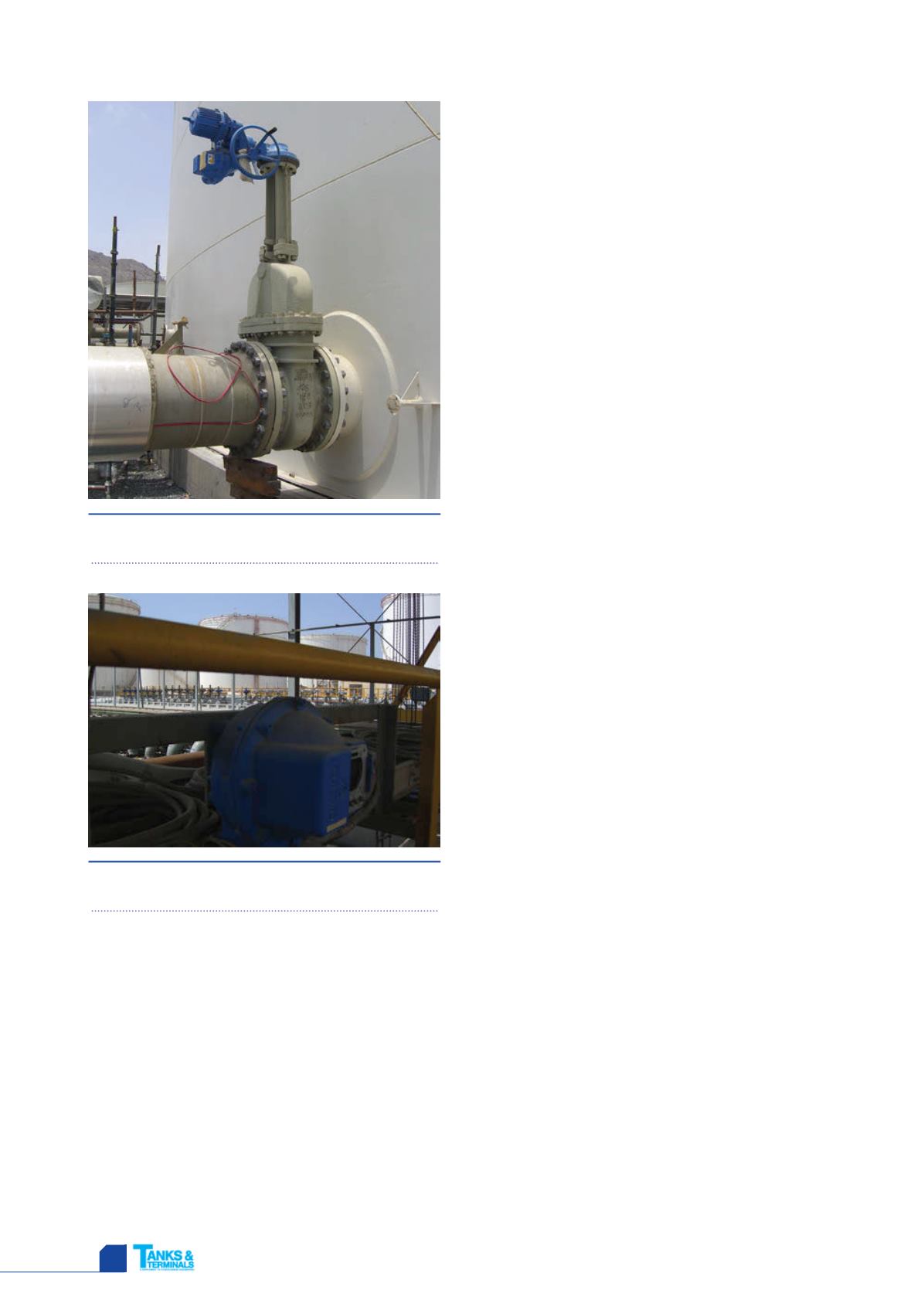
HYDROCARBON
ENGINEERING
40
operation for increased product life and reduced electronic
components failure rates. This solution can also help in areas
where the actuator may be exposed to high temperatures, or
in areas that are difficult to reach. Coupled with an
explosion-proof housing and control, setup and diagnostic
capabilities from a remote location, these actuators can easily
be adapted for emergency control of motor operated valves
(MOVs) in hazardous areas.
Local control stations on actuators help ensure that the
actuator is able to be operated locally when necessary.
Typical local control stations for smart actuators have push
buttons, selector switches, and an LCD display to control,
monitor, and setup the actuator. In many cases, the actuators
in this application are exposed to environmental
contaminants such as salt, dirt, or sand. To prevent damage to
these components, actuator manufacturers have the option
to provide a lockable cover to protect the control stations
from the elements. This can also serve as protection from
unauthorised operation of the equipment.
In many hazardous areas in tank and terminal applications,
actuators are required to have fire proofing that maintains
circuit/control system integrity during a hydrocarbon pool
fire. This fire proofing can be achieved through a number of
methods depending on operator requirements and the
application. These include coating the actuator casing with
special materials to help it protect the sensitive actuator
internals, or fire jackets and fire blankets that physically
protect the actuator from the heat of a fire. These methods
can be verified through a number of industry standards, such
as UL 1709,
1
to prove the integrity of the fire proofing system.
The fire fighting systems in tank farms often rely on
electrically actuated isolation valves for sprinklers and foam
extinction devices, so reliable control provided by these
actuators is critical.
With numerous actuators normally required in tank farm
applications, customers typically require a fieldbus
communication protocol to control the actuators and gather
data. The communication interface on an electric actuator
must therefore be modular and selected depending on
customer and field requirements. Actuators can utilise
different open fieldbus systems, such as FOUNDATION
Fieldbus
TM
, HART®, Modbus, or PROFIBUS DP. A redundant
system is normally preferred in tank farm and storage
applications, such that in the event of any interruption, all
actuators remain accessible. Due to the scale of some plants,
actuators can spread over long distances, necessitating
fibre-optic cables to establish and maintain a connection. As a
more economically efficient alternative to expensive
fibre-optic cabling, this communication network can also be
realised by utilising standard cables coupled with repeaters. A
master station based on these open fieldbus protocols can
simplify integration of the actuators into the plant’s
distributed control system (DCS). The master station can act
as a standalone diagnostic and command centre as well.
There are a plethora of certifications used throughout the
industry for valve and actuator packages: ATEX, INMETRO, SIL,
IEC Ex, EAC Ex, NEMA 7 and 9, CSA, ISO 9001 and TÜV, just to
name a few. Actuator manufacturers need to comply with the
required certification according to project specification while
being able to deliver a cost effective solution quickly.
Valve applications
How the actuator interfaces with the valve is just as
important as the features of the actuator itself, so partnering
with an actuator provider that has significant valve
experience in tank and terminal applications is a must.
Sourcing a single valve-actuator package can also be more
cost effective than sourcing individual pieces, helping
operators avoiding costly startup delays and taking
advantage of single source delivery. Acquiring the total
package from one manufacturer can also help operators
avoid arguments over warranty claims should something go
wrong in the field, as the single manufacturer would take
responsibility for the package. The most important thing to
look for in a provider, though, is industry experience that
gives it the ability to recognise and respond to the unique
needs of tank and terminal automation challenges.
Actuators are perfect solutions to allow remote valve
operation in multi-acreage facilities, where product movement
Figure 1.
Actuator installed at the Aegean tank farm
in Fujairah, UAE.
Figure 2.
Remote mounted control unit due to heavy
vibrations on Star Energy oil tanking terminal.


